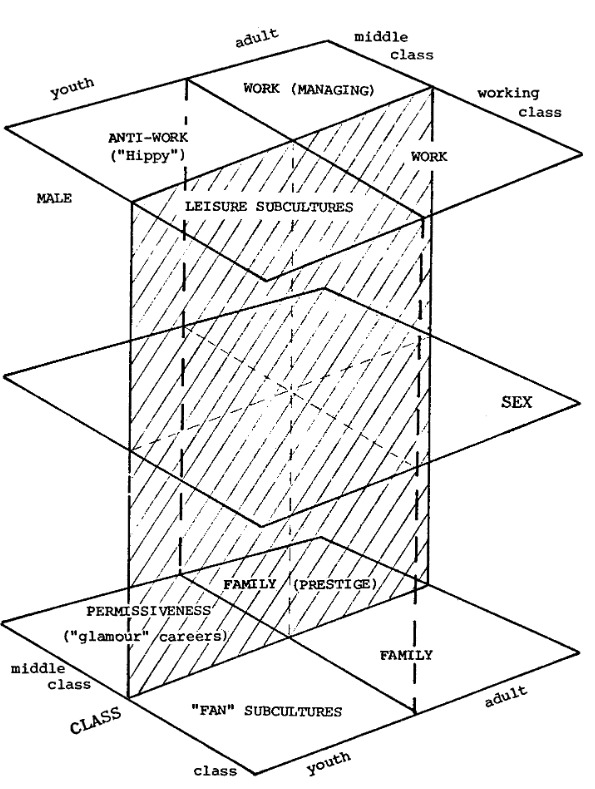-
Title
-
Model of Marginality-Diagram D
-
Description
-
Our argument is then, that women do not inhabit a separated and invisible part of the social formation, but are engaged in exactly the same institutional structures as men, but in different relations. It is the dominant ideological division between Home and Work which structures the invisibility of women, and not their real absence from the world of work. Their identification solely with the “privatised” world of the family has masked, firstly, the historical (not natural—and for a long time very uneven) removal of work from the home, and secondly, the continuing presence of working women. (It also masks the man’s presence in the home.) Men and Women do not inhabit two empirically separated worlds, but pass through the same institutions in different relations and on different trajectories. We would, roughly, diagram the interlocking structure as in Diagram D.
Notes to Diagram D
1. As the diagram attempts to suggest, for both male and female, youth and adult, “social space” is heavily structured by class.
2. Given that basic division, however, social barriers of age, sex and to some extent class itself, manifest varying degrees of permeability according to actual location within the structure. Relative permeability is defined by the basic economic and ideological forms, but is experienced mainly as a biographical circumstance (see Critcher, above).
3. Dimensions of possible activity for both sexes are constructed around certain oppositions, but where, for men, the dominant oppositions are those of work/not-work, management/ labour and work/leisure, women’s experience of those same oppositions is heavily overlaid by the emphasis opposing family/notfamily.
4. For girls, then, the actual “space” for subcultural activity is not marginal but more tightly structured than that available to boys. It is delimited by a doubly-structured subordination, and the elements available for subcultural bricolage (see article on Style, above) carry an even heavier load of prior-established meaning.
-
Designer
-
Powell, Rachel
-
Clarke, John
-
Date
-
2003
-
Source
-
Resistance Through Rituals: Youth Subcultures in Post-war Britain
-
Bibliographic Citation
-
Hall, S. 2003. "Resistance through rituals: Youth subcultures in post-war Britain." Routledge. Page 227.

